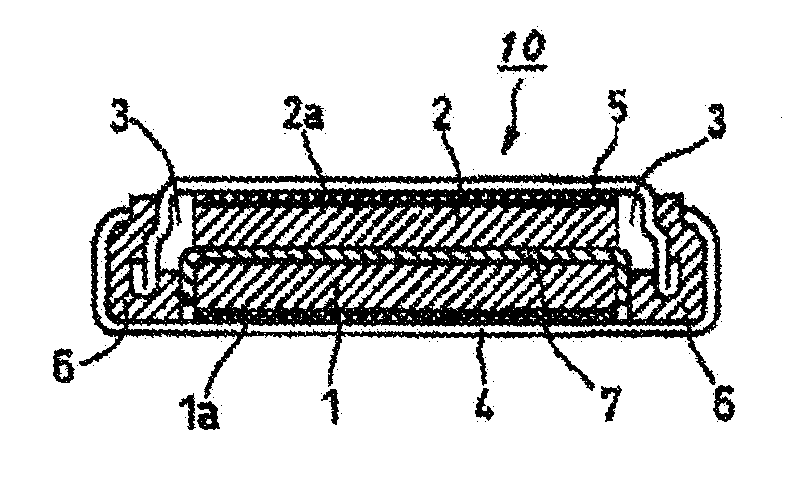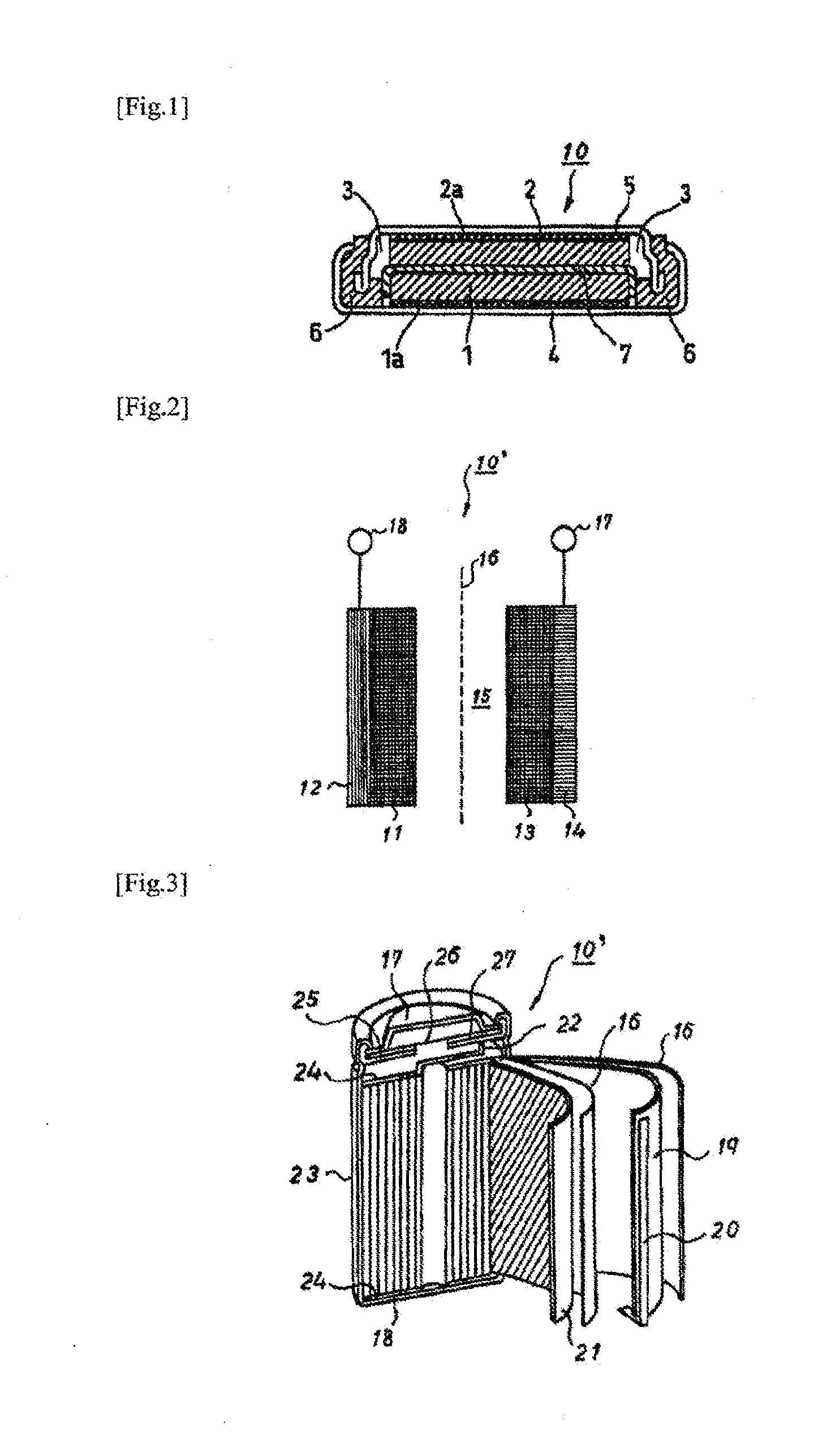Nonaqueous electrolyte solution for batteries, and nonaqueous electrolyte secondary battery using same
a nonaqueous electrolyte and secondary battery technology, applied in the direction of non-aqueous electrolyte cells, cell components, electrochemical generators, etc., can solve the problems of insufficient effect, inability to say that the effect is sufficient, and inability to reverse capacity easily increase, etc., to achieve the effect of small internal resistance, high electrical capacitance, and significant extension of the life of the nonaqueous electrolyte secondary battery
- Summary
- Abstract
- Description
- Claims
- Application Information
AI Technical Summary
Benefits of technology
Problems solved by technology
Method used
Image
Examples
synthetic example 1
Synthesis of Compound A1
[0137]24.7 g of 2-propynol (also referred to as propargyl alcohol), 48.6 g of triethylamine, and 210 g of ethyl acetate were prepared in a 1000 ml three-necked flask with a reflux condenser, and 32.7 g of ethyl phosphoric dichloride was dropped through a dropping funnel while being water-cooled under a nitrogen atmosphere. After dropping, the prepared product was reacted for 1 hour at room temperature, and then the reaction was completed. After the reaction, the reaction solution was well washed with water and purified by vacuum distillation, whereby 27.7 g of compound A1 [ethylbis(2-propynyl)phosphate] was obtained (yield: 68%). For the compound A1, R2 and R1 each represents a hydrogen atom, R3 represents an ethyl compound in the general formula (1).
synthetic example 2
Synthesis of Compound A2
[0138]7.0 g of 2-propynol, 72.9 g of triethylamine, and 210 g of ethyl acetate were prepared in a 1000 ml three-necked flask with a reflux condenser, and 30.8 g of phosphorus oxychloride was dropped through a dropping funnel while being ice-cooled under a nitrogen atmosphere. After dropping, the prepared product was reacted for 1 hour at room temperature, and then the reaction was completed. After the reaction, the reaction solution was well washed with water and purified by vacuum distillation, whereby 28.2 g of compound A2 [tris(2-propynyl)phosphate] was obtained (yield: 66%). For the compound A2, R2 and R1 each represents a hydrogen atom, R3 represents a 2-propynyl compound in the general formula (1).
synthetic example 3
Synthesis of Compound A3
[0139]200 ml of ethyl acetate and 55 g of 2,4-hexadiyne-1,6-diol were prepared in a 1000 ml three-necked flask with a reflux condenser, and 100 g of pyridine was dropped through a dropping funnel under a nitrogen atmosphere. 215 g of diethyl chlorophosphate was further dropped under water cooling conditions and then reacted for 1 hour under water cooling conditions, and then the reaction temperature was increased to 65° C. to complete the reaction in two hours. After the reaction, the reaction solution was well washed with water and purified by silica column, whereby 126 g of compound A3 [2,4-hexadiyne-1,6-diol tetraethyl diphosphate] was obtained (yield: 66%). For the compound A3, in the general formula (2), R4 and R5 each represents a hydrogen atom, and R6 represents an ethyl compound.
PUM
 Login to View More
Login to View More Abstract
Description
Claims
Application Information
 Login to View More
Login to View More - R&D
- Intellectual Property
- Life Sciences
- Materials
- Tech Scout
- Unparalleled Data Quality
- Higher Quality Content
- 60% Fewer Hallucinations
Browse by: Latest US Patents, China's latest patents, Technical Efficacy Thesaurus, Application Domain, Technology Topic, Popular Technical Reports.
© 2025 PatSnap. All rights reserved.Legal|Privacy policy|Modern Slavery Act Transparency Statement|Sitemap|About US| Contact US: help@patsnap.com



